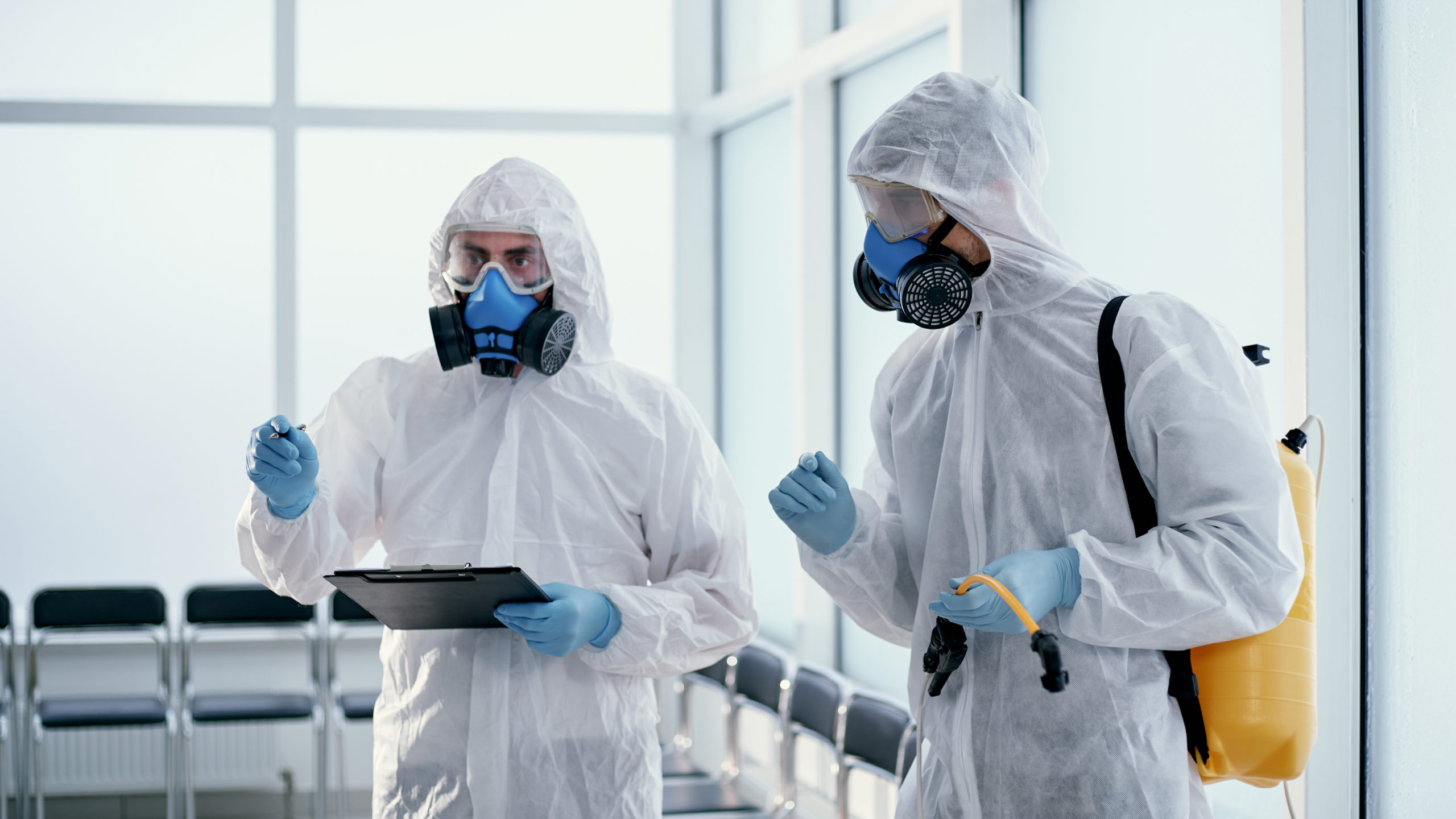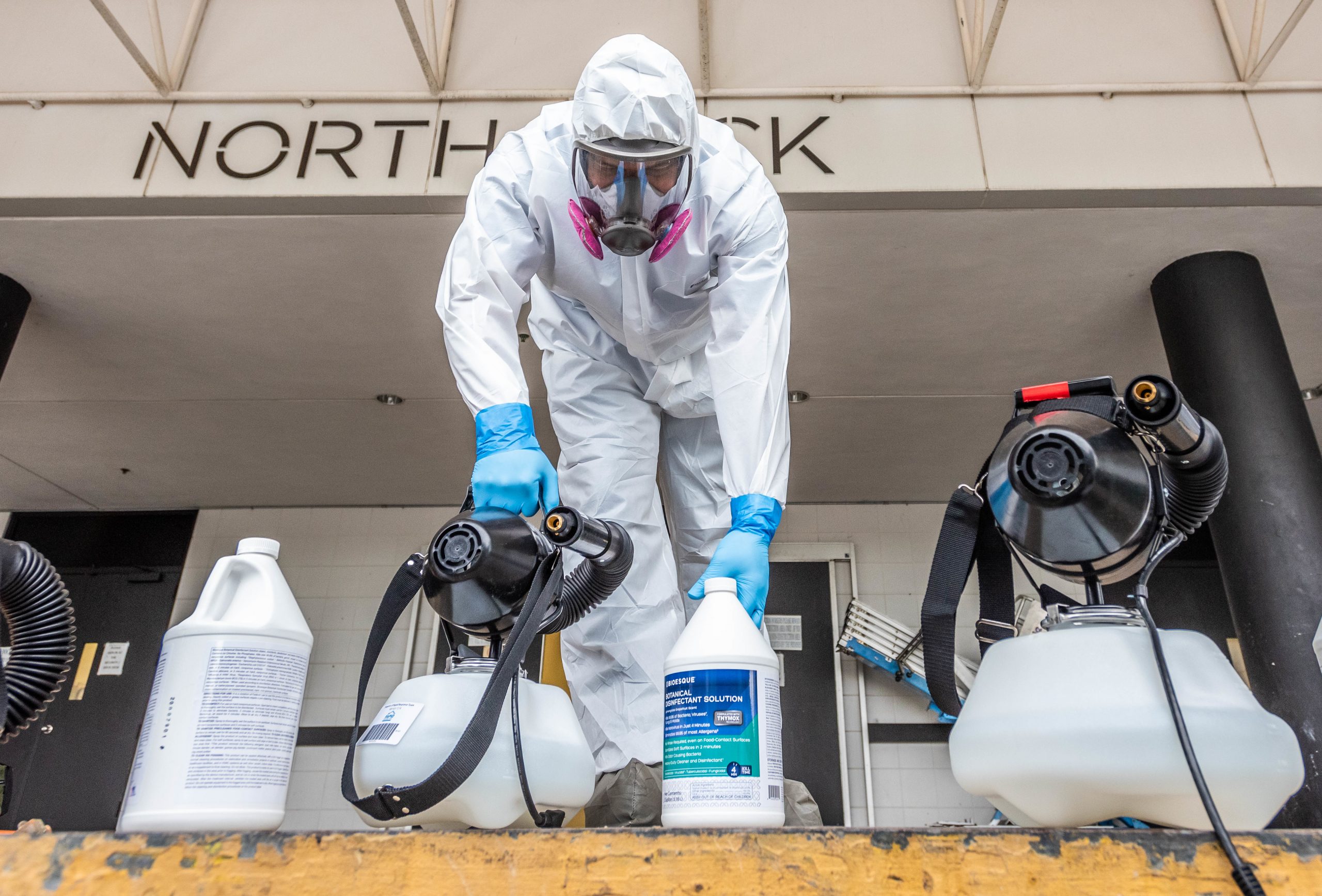Clandestine Lab Cleanup: Comprehensive Purification for Hazardous Sites
Clandestine Lab Cleanup: Comprehensive Purification for Hazardous Sites
Blog Article
Specialist Biohazard Cleansing and Decontamination for Blood, Bodily Fluids, and Hazardous Products
The potential wellness risks connected with exposure to biohazards underscore the crucial need for thorough handling and thorough clean-up. As we navigate the intricate landscape of biohazard clean-up, understanding the subtleties of laws, conformity, and the customized devices at play becomes critical in guaranteeing a thorough and risk-free purification process.
Wellness Threats of Biohazard Direct Exposure
Exposure to biohazards poses significant wellness risks that can result in severe consequences for neighborhoods and individuals alike. Biohazards include a vast array of organic compounds, consisting of blood, bodily fluids, mold, microorganisms, viruses, and various other potentially contagious products. When individuals enter call with these biohazards, whether via accidents, improper handling, or environmental exposure, they face the risk of contracting major diseases or conditions.
Among the main health risks connected with biohazard direct exposure is the transmission of contagious illness. Bloodborne virus such as HIV, liver disease B and C, and various bacteria can be present in biohazardous products, posing a direct threat to human health. Breathing in airborne biohazards like mold and mildew spores or entering call with infected surface areas can also bring about respiratory issues, allergic reactions, and other damaging wellness results.
In addition, biohazard exposure can have long-lasting wellness implications, with some illness manifesting years after the initial call (Blood Cleanup). As a result, it is important to prioritize proper biohazard cleaning and decontamination to alleviate these health and wellness threats and make certain the safety and security of individuals and areas

Specialized Training for Biohazard Cleaning
When it pertains to dealing with biohazard cleaning effectively and safely, specialized training plays an essential duty in making certain appropriate purification treatments are adhered to. Biohazard cleanup requires certain expertise and skills to successfully minimize threats linked with bloodborne virus, physical fluids, and hazardous materials. Experts learnt biohazard clean-up undergo extensive instruction on just how to securely take care of, get rid of, and deal with biohazardous products to stop contamination and direct exposure.
Specialized training for biohazard clean-up covers a series of vital topics, consisting of correct personal protective devices (PPE) use, bloodborne virus recognition, decontamination strategies, and unsafe waste disposal procedures. People learnt biohazard cleanup are geared up with the needed expertise to analyze contamination levels, determine possible hazards, and carry out proper cleanup procedures in conformity with regulative requirements.
Continual training and education are paramount in the field of biohazard cleanup to remain upgraded on the current decontamination technologies, safety methods, and guidelines. By purchasing specialized training, biohazard clean-up experts can properly reply to emergency clean-up circumstances and guard both public health and the setting.
Relevance of Appropriate Decontamination Methods
Utilizing correct purification techniques is important in biohazard cleanup to efficiently remove unsafe products and reduce health risks. Efficient purification not just makes certain the removal of noticeable traces of blood, bodily fluids, and other biohazards but additionally targets unnoticeable virus that might pose serious health threats if not appropriately removed. By complying with strict purification protocols, trained specialists can substantially lower see here now the threat of exposure to dangerous bacteria, infections, and microorganisms that could result in infections or conditions.
Proper decontamination strategies entail the use of customized devices and anti-bacterials that are particularly made to reduce the effects of biohazards efficiently. Thorough cleansing and sanitation of polluted areas are vital to avoid the spread of pathogens and ensure a safe environment for occupants. Furthermore, the right disposal of biohazardous waste following purification procedures is vital in stopping contamination of various other surface areas or people.

Equipment and Tools for Safe Clean-up
When dealing with blood, physical fluids, or unsafe products, biohazard cleansing professionals count on specialized gear to lessen direct exposure dangers and completely decontaminate the affected location. In addition, biohazard cleaning sets including disinfectants, absorptive materials, and biohazard bags are made use of to safely get rid of and contain of polluted items.
Advanced cleansing tools like hospital-grade anti-bacterials, HEPA-filtered vacuums, and misting machines are utilized to sanitize surface areas and get rid of biohazards efficiently. Specialized devices such as sharps containers and biohazard garbage disposal containers are made use of to securely handle sharp items and biohazardous waste materials. By utilizing the right tools and devices, biohazard cleansing specialists can make sure a thorough clean-up process that prioritizes safety and security and minimizes health and wellness dangers for both workers and passengers of the afflicted room.
Rules and Compliance in Biohazard Cleaning
Proper adherence to laws and compliance standards is critical in biohazard cleaning to guarantee the safety of both workers and Home Page the atmosphere. Federal government agencies such as OSHA (Occupational Safety and Health And Wellness Administration) and the EPA (Environmental Protection Agency) have established details standards for biohazard cleaning procedures to decrease health and wellness threats and environmental contamination. These laws cover a series of elements consisting of the handling, transportation, and disposal of biohazardous materials, as well as the essential training and safety equipment required for workers associated with the cleanup process.
Biohazard cleansing companies should stay updated with these policies to ensure that their procedures meet the required security criteria. Failing to conform with these laws can lead to extreme repercussions, including penalties, lawful activity, and threatening the wellness of people and the setting. By complying with rigid guidelines and compliance procedures, biohazard cleansing companies can efficiently reduce risks and guarantee a secure and comprehensive clean-up procedure for all celebrations entailed.
Verdict
Finally, biohazard cleansing and decontamination require specific training, appropriate methods, and adherence to policies. Direct exposure to blood, bodily liquids, and hazardous materials postures significant health and wellness threats, making it crucial to make use of the ideal tools and tools for secure clean-up. By following strict procedures and standards, specialists can properly alleviate the dangers connected with biohazard direct exposure and ensure the safety of both themselves and others.
As we browse the intricate landscape of biohazard clean-up, recognizing the nuances of policies, conformity, and the specialized equipment at play ends up being essential in ensuring a detailed and safe decontamination procedure. (Blood Cleanup)
When it comes to taking care of this content biohazard cleanup successfully and securely, specialized training plays an essential function in ensuring appropriate decontamination treatments are followed.Using correct decontamination techniques is critical in biohazard cleaning to efficiently minimize and remove dangerous materials wellness risks. Furthermore, biohazard cleansing sets containing anti-bacterials, absorbent products, and biohazard bags are utilized to securely dispose and have of polluted things.
Government firms such as OSHA (Occupational Security and Wellness Management) and the EPA (Environmental Defense Firm) have actually developed certain standards for biohazard clean-up procedures to decrease wellness threats and ecological contamination.
Report this page